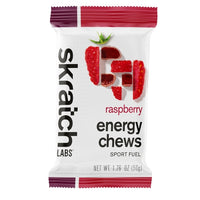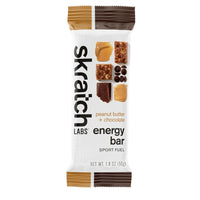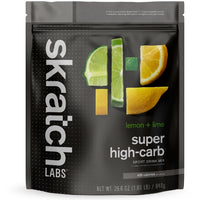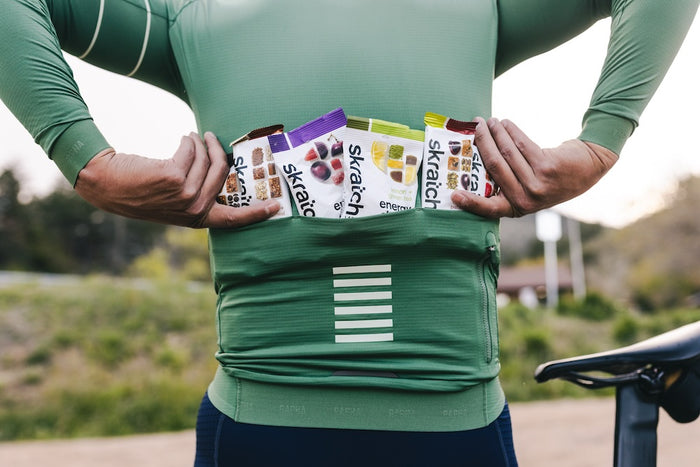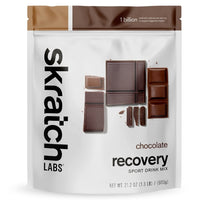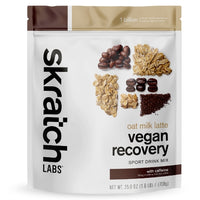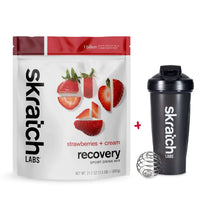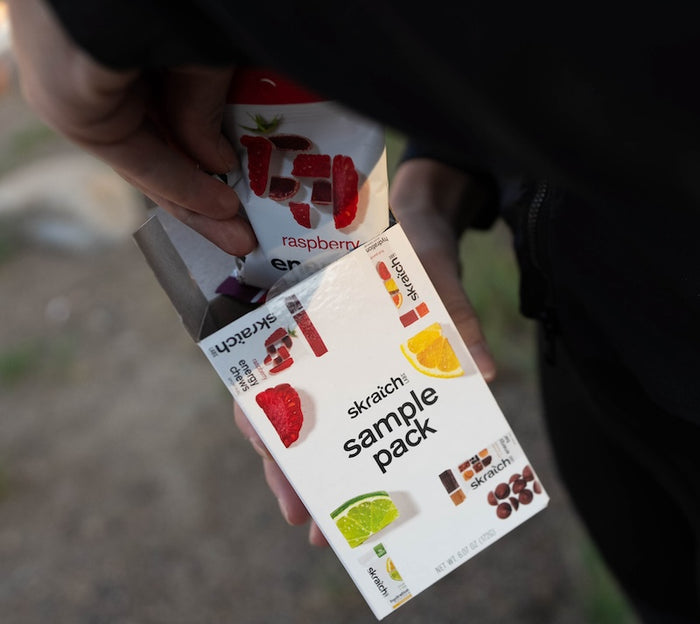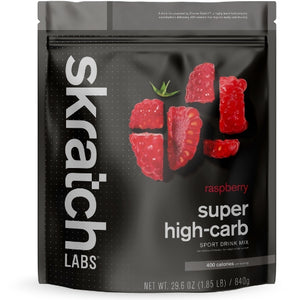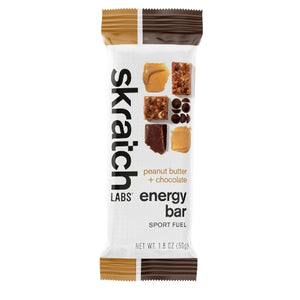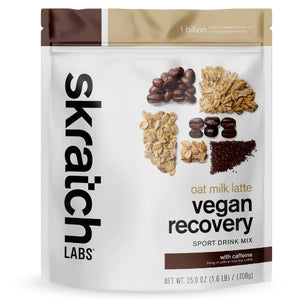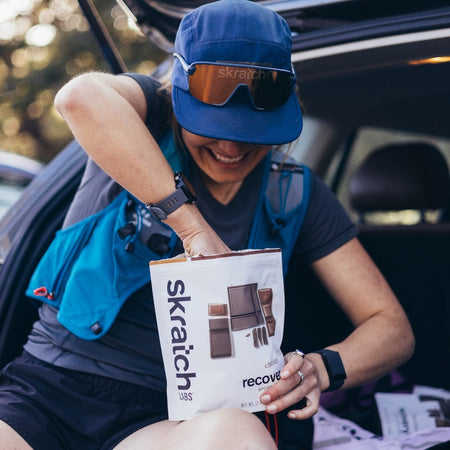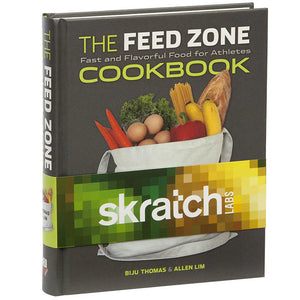Why Carbohydrates Matter for Performance
Carbohydrates might be the most misunderstood nutrient in sports nutrition. With so much conflicting advice—high carb this low-carb that—it’s easy to forget the basics:
👉 Carbs are your body’s preferred and most efficient fuel for high-intensity efforts.
👉 When consumed at the right times and in the right forms, they optimize endurance, prevent fatigue, and accelerate recovery.
But when mistimed or under-consumed, your body struggles. Glycogen runs low. Muscles fatigue. You bonk.
Let’s break it down: what carbs are, how they work, and how to fuel with them, before, during, and after your workouts.
What Are Carbohydrates?
Carbohydrates are molecules made of carbon, hydrogen, and oxygen. Your body breaks them down into glucose, a sugar that powers muscle contractions and fuels your brain. Glucose can be:
- Used immediately for energy
- Stored in your muscles and liver as glycogen for quick access later
Carbs provide 4 calories (kcal) per gram and are especially powerful because they:
-
Produce ATP (energy) faster than fat
-
Require less oxygen to metabolize
-
Help preserve protein for recovery instead of burning it for fuel
Why Carbs Are Critical During Exercise
Here’s why carbs matter more than fat during high-intensity or long-duration activity:
| System | Fuel Source | Speed of Energy | Used When? |
| Phosphagen (ATP-PCr) | Creatine phosphate | Very Fast | Short bursts (<10 sec) |
| Anaerobic Glycolysis | Glucose (carbs) | Fast | Hard efforts (30 sec – 2 min) |
| Aerobic Metabolism | Glucose + Fat | Slower | Longer duration, lower intensity |
At intensities above ~70% of your VO₂ max, fat alone won’t cut it. Carbs become your limiting factor.
The Difference Between Simple and Complex Carbohydrates
The terms “simple” and “complex” describe how carbohydrates are structured—and how quickly they’re digested.
Simple Carbohydrates
Made of 1–2 sugar molecules (like glucose, fructose, or sucrose), these digest fast and provide a quick hit of energy.
Best for:
- Pre-ride “top offs”
- During intense workouts
- Fast post-workout replenishment
Examples:
- Fruit juice
- Honey
- Sports drinks or chews (like Skratch Labs Sport Drink Mix or Energy Chews)
- A pastry from your local bakery
Complex Carbohydrates
Made of longer chains of sugar molecules, these digest slower—releasing energy more steadily.
Complex carbs include:
- Starch: Found in potatoes, grains, and rice
- Fiber: Indigestible, but slows digestion and supports blood sugar control
Best for:
- Pre-training meals
- Glycogen loading
- Long-duration workouts when paired with protein/fat
Examples:
- Whole grains (oats, quinoa, brown rice)
- Lentils, sweet potatoes
- Skratch Labs Energy Bar (made with quinoa crisps, brown rice, nut butter)
- Skratch Labs Super High-Carb Drink Mix
📌 Clarification: White rice is technically a simple starch, but when combined with fat or protein—like in our Skratch rice cakes—it can act more like a steady fuel.
When to Use Which? A Fueling Framework Starting Points
Pre-Training / Pre-Race
- 1–4 g carbs/kg body weight eaten 1–4 hours before
- Closer to exercise = simpler carbs, further away = more complex
- Limit fiber close to workouts to avoid GI distress
✅ Example: Oatmeal + honey 1 hour before
✅ Example: Toast + nut butter 2–3 hours before
During Exercise
- <60 min: Optional small carb dose
- 1–2 hrs: 30–60g+ carbs/hour
- 2.5+ hrs: 60–90g, up to 120g/hr for trained guts
- Combine glucose + fructose for better absorption
✅ Example: Skratch Super High-Carb Mix
✅ Example: Sport Drink Mix + Energy Chews
✅ Example: PBJ on whole grain bread mid-ride
📌 *Want to push the upper end of carb intake (90–120g/hr)? You’ll need to train your gut…
How to Train Your Gut to Absorb More Carbs
Fueling at high carb rates (especially 90g+/hr) requires digestive adaptation.
Here’s how to build tolerance:
- Start at 30–40g/hr during shorter sessions
- Increase by ~10g every few weeks
- Use multiple carb types (e.g. glucose + fructose)
- Practice your exact fueling plan during training—not just race day
Skratch products are formulated with this in mind. Mix and match drink mix, chews, bars, Feed Zone Recipes to meet your targets without wrecking your gut.
Sugar Cravings, Energy Dips & Underfueling
One common sign of chronic underfueling—especially for active people—is frequent sugar cravings or energy crashes.
Your body may be asking for:
- More consistent carb intake throughout the day
- Better pre- and post-exercise fueling
- Recovery support after training
📌 Note: While cravings aren’t always diagnostic, they can be useful signals—especially when paired with mood swings or persistent fatigue.
How Skratch Labs Helps
| Product | Carb Type | Best For |
| Sport Hydration Mix | Simple + Electrolytes | Fast hydration + fuel during shorter workouts |
| Energy Chews | Simple | Mid-workout fast fuel, low fiber |
| Energy Bar Sport Fuel | Complex + Fat | Long efforts, steady energy, real food feel |
| Super High-Carb Drink Mix | Blended | Ultra-distance, up to 100g carbs/serving |
| Recovery Drink Mix | Simple + Protein | Post-exercise recovery + glycogen rebuild |
Sources
Alves, Joao, et al. “Hormonal Changes in High-Level Aerobic Male Athletes during a Sports Season.” International Journal of Environmental Research and Public Health, vol. 17, no. 16, 2020, p. 5833. MDPI, https://doi.org/10.3390/ijerph17165833.
Burke, Louise, et al. Clinical Sports Nutrition. 6th ed., McGraw-Hill Education Australia, 2024.
Cadegiani, Fausto A., and Claudio E. Kater. “Basal Hormones and Biochemical Markers as Predictors of Overtraining Syndrome in Male Athletes: The EROS-BASAL Study.” Journal of Athletic Training, vol. 54, no. 8, 2019, pp. 906–914. National Athletic Trainers' Association, https://doi.org/10.4085/1062-6050-148-18.
Hargreaves, Mark, and Lawrence L. Spriet. “Skeletal Muscle Energy Metabolism during Exercise.” Nature Metabolism, vol. 2, 2020, pp. 817–828. Nature Publishing Group, https://doi.org/10.1038/s42255-020-0235-4.
Holtzman, Brier, and Kathryn E. Ackerman. “Recommendations and Nutritional Considerations for Female Athletes: Health and Performance.” Sports Medicine, vol. 51, suppl. 1, 2021, pp. 43–57. Springer, https://doi.org/10.1007/s40279-021-01508-8.
Isola, Valerio, et al. “Changes in Hormonal Profiles during Competition Preparation in Physique Athletes.” European Journal of Applied Physiology, 2024, https://doi.org/10.1007/s00421-024-05606-z.
Jeukendrup, Asker E. “A Step towards Personalized Sports Nutrition: Carbohydrate Intake during Exercise.” Sports Medicine, vol. 44, no. S1, 2014, pp. 25–33. Springer, https://doi.org/10.1007/s40279-014-0148-z.
Burke, Louise M., et al. “Carbohydrates for Training and Competition.” Journal of Sports Sciences, vol. 29, sup1, 2011, pp. S17–S27. Taylor & Francis, https://doi.org/10.1080/02640414.2011.585473.
Stellingwerff, Trent, and James Spriet. “Optimizing Carbohydrate Intake during Exercise: Effect on Performance.” Sports Science Exchange, vol. 28, no. 167, 2015. GSSI, https://www.gssiweb.org/en/sports-science-exchange/article/optimizing-carbohydrate-intake-during-exercise.
Thomas, D. Travis, et al. “Position of the Academy of Nutrition and Dietetics, Dietitians of Canada, and the American College of Sports Medicine: Nutrition and Athletic Performance.” Journal of the Academy of Nutrition and Dietetics, vol. 116, no. 3, 2016, pp. 501–528. https://doi.org/10.1016/j.jand.2015.12.006.





